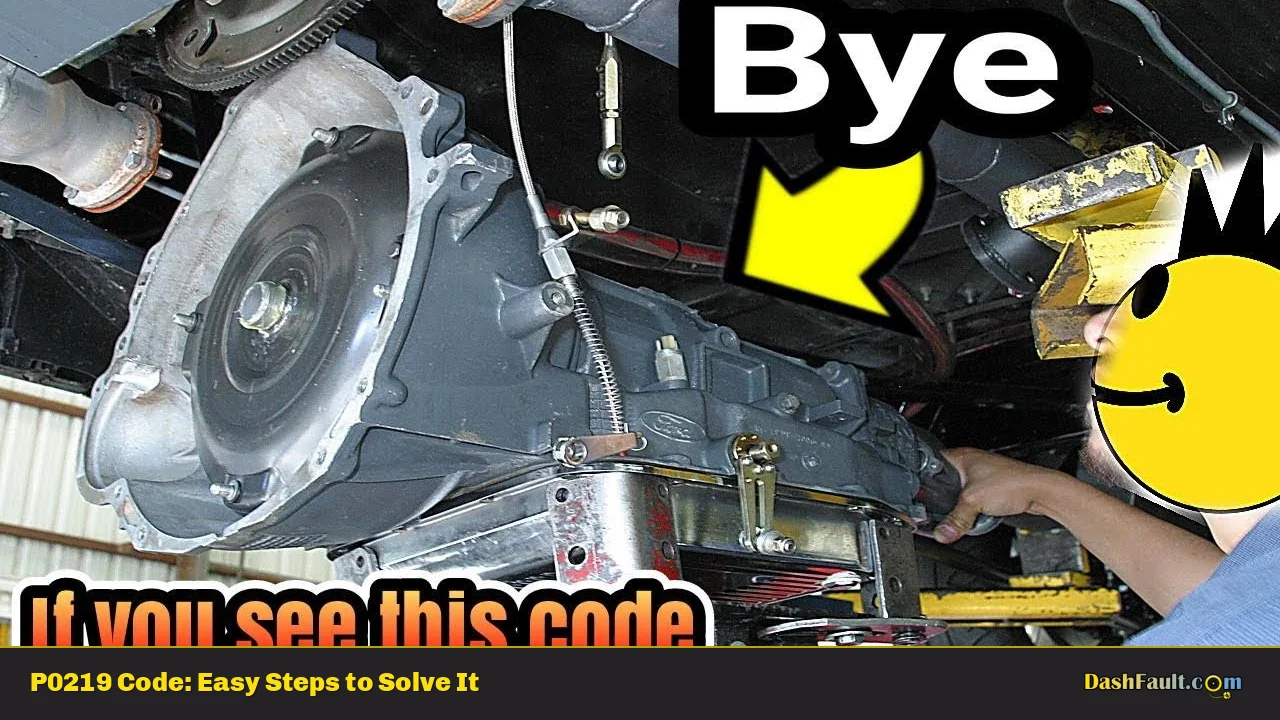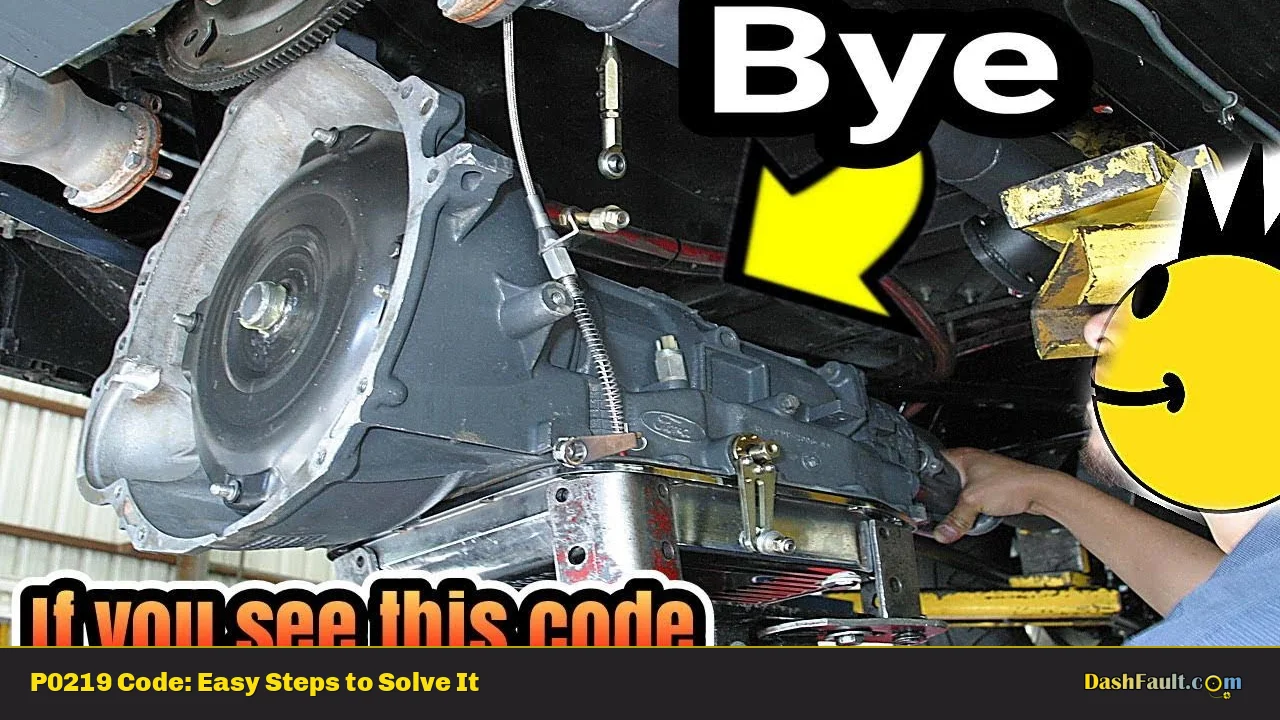The P0219 trouble code is a diagnostic trouble code (DTC) that indicates an “Engine Overspeed Condition.” This code is logged by the vehicle’s Powertrain Control Module (PCM) when it detects that the engine is operating at revolutions per minute (RPM) that exceed the manufacturer’s specified limits. This can happen due to various reasons, including driver error, mechanical issues, or sensor malfunctions. Understanding this code is crucial for vehicle owners and DIY mechanics, as it can help prevent potential engine damage and ensure safe vehicle operation.
| P0219 Code Meaning | P0219 Code Common Causes |
|---|---|
| Engine Overspeed Condition | Driver error (over-revving) |
| Excessive RPM detected by PCM | Faulty crankshaft position sensor (CKP) |
| Potential engine damage warning | Faulty camshaft position sensor (CMP) |
| Defective transmission input/output speed sensors | |
| Faulty Powertrain Control Module (PCM) |
Symptoms of P0219 Code
When the P0219 code is triggered, the symptoms may vary depending on the underlying cause. Common symptoms include:
- Illuminated check engine light
- Engine revving excessively without load
- Transmission slipping or getting stuck in “limp” mode
- Possible knock sensor activation codes
Understanding these symptoms can help in diagnosing the issue and determining whether immediate action is needed.
Technical Explanation of P0219 Code
The P0219 code is categorized under the powertrain diagnostic trouble codes. It indicates that the PCM has detected an overspeed condition in the engine, meaning that the crankshaft is rotating faster than what is considered safe. The PCM monitors engine speed using input from several sensors, including:
- Crankshaft Position Sensor (CKP)
- Camshaft Position Sensor (CMP)
- Transmission Speed Sensors
When the input from these sensors indicates that the RPM has exceeded a pre-defined threshold, the PCM logs the P0219 code. This situation can arise from various factors such as driver behavior, mechanical failures, or sensor malfunctions.
Step-by-Step Diagnosis of P0219 Code
Diagnosing a P0219 code requires a systematic approach to identify the root cause. Here’s how to proceed:
- Connect an OBD-II Scanner: Use a diagnostic scanner to read and clear codes. Record any additional codes present.
- Inspect Freeze Frame Data: Check freeze frame data to understand the conditions under which the P0219 code was triggered.
- Check for Driver Error: Verify if there was any recent over-revving due to driver error, especially in manual transmission vehicles.
- Test Sensors:
- Inspect and test the CKP and CMP sensors for proper functionality.
- Check transmission speed sensors for faults.
- Inspect Wiring and Connectors: Look for damaged wiring or poor connections related to the sensors.
- Road Test: After clearing codes, perform a road test to see if the P0219 code reappears.
- Evaluate PCM Functionality: If all sensors are functioning correctly but the code persists, consider testing or replacing the PCM.
Solution Methods for P0219 Code
Addressing a P0219 code involves several potential solutions depending on the diagnosed issue:
- Driver Education: If driver error is identified as a cause, educating drivers about proper shifting techniques can prevent future occurrences.
- Sensor Replacement: Replace faulty CKP or CMP sensors if they fail testing.
- Transmission Repairs: If transmission issues are detected, such as slippage or malfunctioning speed sensors, repairs or replacements may be necessary.
- PCM Reprogramming/Replacement: If no other issues are found, consider reprogramming or replacing the PCM if it is determined to be faulty.
Cost Estimates
The cost of addressing a P0219 trouble code can vary significantly based on several factors:
- OBD-II Scanner Use: $50 – $150 for professional diagnostics.
- Sensor Replacement:
- CKP Sensor: $100 – $300 (parts and labor)
- CMP Sensor: $100 – $250 (parts and labor)
- Transmission Repairs: $500 – $2000 depending on severity and parts needed.
- PCM Replacement: $300 – $1200 including programming.
Warnings and Recommendations
- Professional Help Needed: If you are unsure about diagnosing or repairing issues related to the P0219 code, it’s advisable to seek professional assistance to avoid further damage or safety risks.
- Monitor Driving Habits: Regularly monitor your driving habits to prevent over-revving situations that could trigger this code.
Closing Paragraph
The P0219 trouble code serves as an important alert regarding engine performance and safety. Understanding its implications and symptoms can empower vehicle owners and DIY mechanics to take appropriate actions before serious damage occurs. By following systematic diagnostic steps and addressing potential causes promptly, you can maintain your vehicle’s health and ensure safe driving conditions.
Frequently Asked Questions About P0219
- What does the P0219 code mean?
The P0219 code indicates an “Engine Overspeed Condition,” meaning that the engine RPM has exceeded safe operational limits. - What causes a P0219 trouble code?
Common causes include driver error, faulty crankshaft position sensors, camshaft position sensors, or issues with transmission speed sensors. - How serious is a P0219 code?
This code can indicate potential engine damage if not addressed promptly; however, it may also result from temporary over-revving. - Can I drive my car with a P0219 code?
While it may be safe for short distances under careful driving conditions, it’s best to diagnose and resolve the issue as soon as possible. - How do I fix a P0219 code?
Fixing this code typically involves diagnosing any underlying issues with sensors or driver behavior and making necessary repairs. - Is it safe to clear a P0219 code without fixing it?
No, simply clearing the code without addressing its cause may lead to further engine damage. - How much does it cost to repair a P0219?
The cost varies widely based on diagnosis and repairs needed but can range from $100 for sensor replacements to over $2000 for transmission repairs. - Should I consult a mechanic for a P0219 code?
If you’re unsure about diagnosing or repairing your vehicle yourself, consulting a qualified mechanic is highly recommended.

